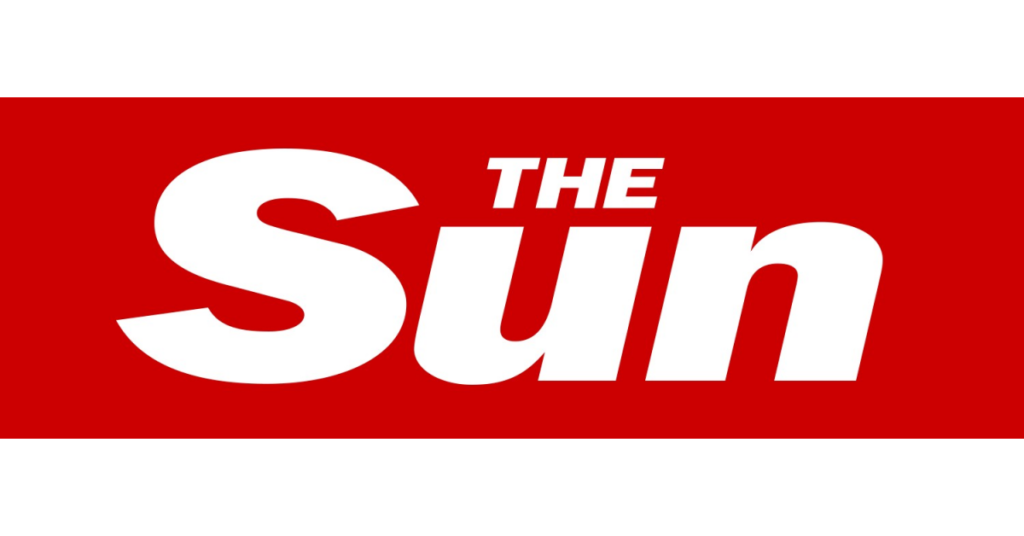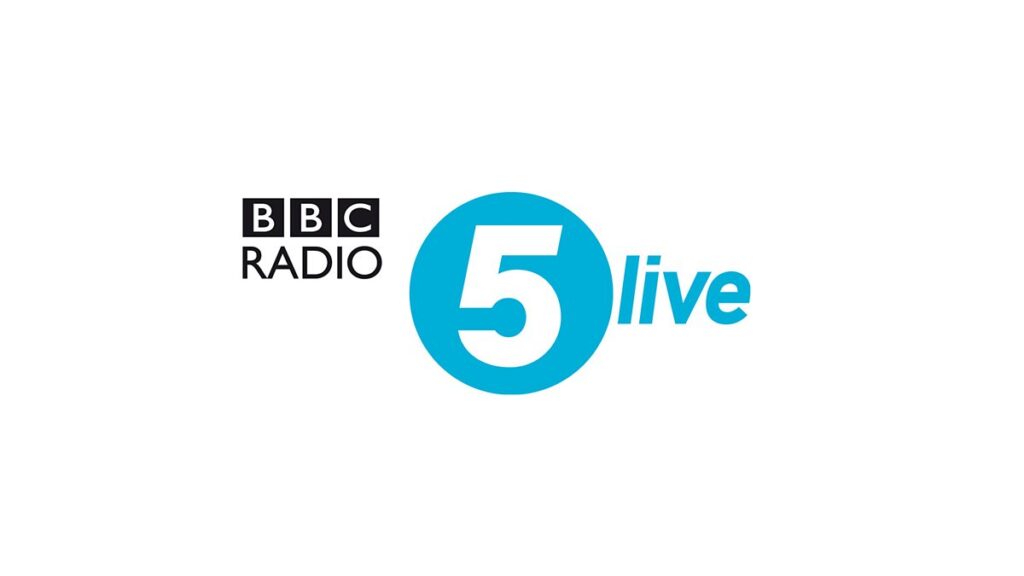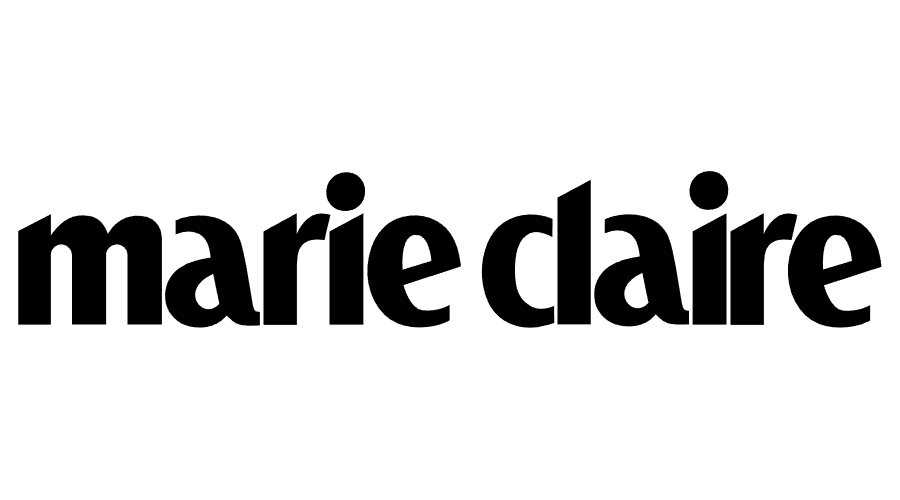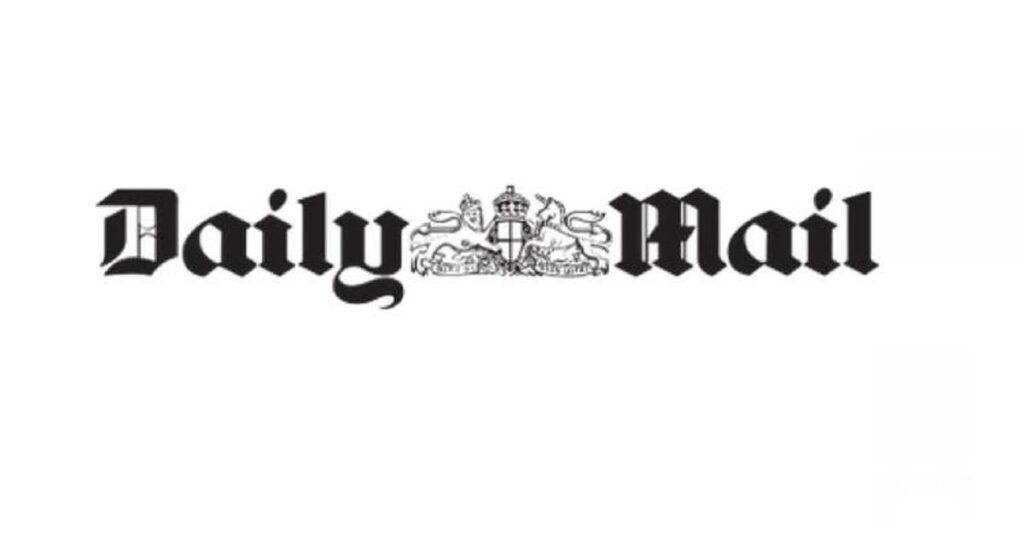Who Is Breast Augmentation Revision Suitable For?
Breast augmentation revision surgery is suitable for those who wish to rejuvenate the breast following primary breast augmentation. There may be a need to change volume, shape or improve symmetry. One may need to remove or replace the current implants with new implants and one may need to change the breast tissue in the form of a mastopexy.
Who Is Not A Good Candidate For Surgery?
You’re not a good candidate for implant replacement surgery if you smoke, have a significant medical history and don’t have realistic expectations of the surgery and results.
How Much Does Breast Augmentation Revision Cost?
The cost of breast augmentation revision can vary because of the nature of the surgery. This means that the surgeon will provide you with a full quote after your consultation.
What To Expect During Your Consultation?
The success of the breast augmentation revision consultation depends on your openness and honesty in relation to what troubles you and your expectations of surgery. You will be asked questions about your health, desires and lifestyle, as different operations can be tailored to your needs and the potential outcomes and the risks and complications will be discussed with you in detail. A consultation regarding the risks and limitations of breast augmentation revision surgery will help you to choose a procedure that will meet your expectations.
Preparing For Breast Implant Removal and Revision Surgery
All breast augmentation revisionary procedures require general anaesthetic. Your health is of prime importance and any cosmetic surgery should be postponed if you are unwell for any reason. It is important that if anything changes with your health that you make contact with us.
In preparation for breast implant revision and replacement surgery, you should ideally stop smoking 6 weeks prior to surgery and stop taking aspirin, anti-inflammatory drugs and herbal supplements. Preoperative tests may be required prior to breast augmentation revision surgery, which we will arrange if required. It is normal to experience discomfort after surgery and you will need to be off work for at least two weeks, depending on the nature of your job.
The Surgery
Breast implant revision and replacement surgery often takes between 1.5 and 2.5 hours. Your previous incisions are usually used but if the breast needs to be uplifted or skin excised, there may be an incision around the areola and possibly a vertical incision, as well as the incision in the crease of the breast.
The previous implant is removed and then a decision needs to be made on whether the capsule needs to be removed in part or in its entirety. A further decision needs to be made as to whether to change the pocket placement of the implant. Following this, the new implant if required is placed in the new pocket and the incisions closed. If an uplift is performed this is usually performed at this time. The wounds are then closed with dissolvable stitches.
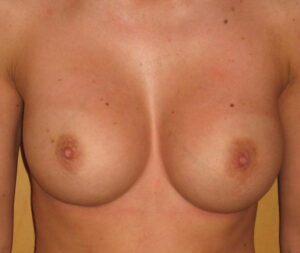
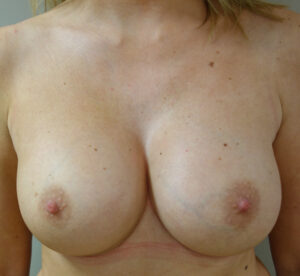
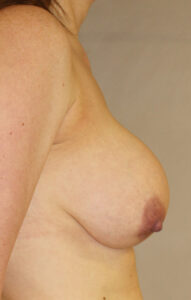
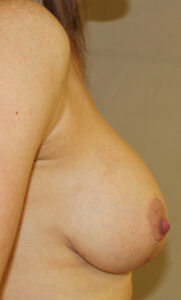

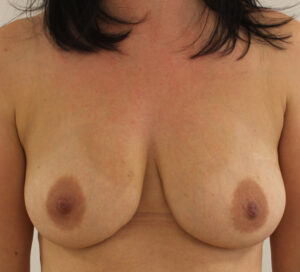
What To Expect After Breast Implant Revision Surgery
You will usually return to the ward within an hour following breast implant revision surgery and you will be encouraged to mobilise, eat and drink before the anaesthetic wears off. You will usually not have drains in place. It is normal to feel swollen and experience discomfort that will usually require analgesia.
There is often a sense of pressure on the chest, a discomfort around the outside of the implant due to the pressure effect and due to the skin feeling tight and swollen. You should wear a support bra following breast augmentation revision surgery and keep this in place day and night for at least 4 weeks. You may be able to go home the same day but often with breast implant revision surgery, you should stay in overnight. You should keep the wounds dry for the next week and arrange for someone to pick you up following surgery. Also, you will need to have some support at home when you are discharged.
A week after the breast implant revision surgery, you will be reviewed in the clinic and the wounds will be checked. In the first week after surgery avoid exercise. After this, you can resume light exercise when cleared by your implant revision surgeon and after 2-3 weeks, you should be ready for normal exercise.
Risks and Complications of Breast Implant Replacement Surgery
The vast majority of patients are delighted with the results of implant replacement surgery, although common early complaints include change in sensation, bruising, swelling and there is often a slight difference between the two sides. Uncommon early complications include infection, haematoma, delayed healing, extrusion of the implant, seroma formation and thickened scar. There are also uncommon risks of general anaesthesia such as respiratory/cardiac compromise and deep vein thrombosis.
In terms of later complications the most problematic is infection. Often in these scenarios it is necessary to remove the implants and leave things to settle before considering reimplantation at a later date (often 3-6 months). This is extremely uncommon.
Implants do change over time and all implants develop a capsule even after breast augmentation revision surgery. This is a scar that forms within 6 weeks of surgery, it is a protective layer but it can change over time and thicken and scar. If this were to occur it is called capsular contracture and can cause change to the shape and can cause discomfort. The chances of having a re-operation for any reason after a breast augmentation are about 1-3% a year. So, after 10 years about 10-30% of women will have had a re-operation. Aside from change of size; capsular contracture is the most common reason for re-operation.
Sensation usually changes following breast implant revision and replacement surgery and the nipples may be hyper or hypo sensitive. It is uncommon to have permanent changes in sensation but sensation can take a number of months to return.
Although all implants can rotate within the pocket, when anatomical implants rotate they can cause a change in shape. Often this is self-limiting but if this was to become troublesome it may be necessary to replace the implants. This is uncommon. Also, you may, especially if you are thin, be able to feel the edges of the implants. This is an inevitable consequence of breast implant revision surgery and will not improve with time. Over time ripples or folds may be palpable especially in certain positions.
Some patients can develop intermittent swelling following breast augmentation revision surgery and seroma formation is commoner in revisonary cases. This usually resolves but if it persists may warrant further investigation.
With time just as the implant ages so does the breast tissue. This is particularly an issue with childbirth. It may be that further implant revision surgery to tighten the skin is required at a later date and everyone undergoing breast augmentation should be aware of the need for further surgery for both the implants and also the skin / breast tissue.
Implications On Mammograms And Screening
Breast implants push your natural breasts forward and so do not make it any more difficult to examine your breasts for lumps. You need to be aware that 1 in 10 women do develop breast cancer and if you find a discrete lump you should consult with your GP. If you find a lump or you are at an age to enter a breast-screening programme you may be offered a mammogram. You need to tell the mammography service that you have breast implants as you may require special views or potentially a different type of scan.
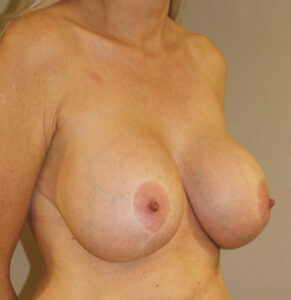
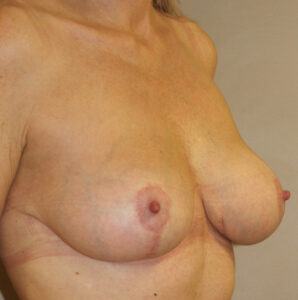
There are many different types of implants for replacement surgery. There are different sizes, different shapes and the covering and the content or fill of implants can vary. The shell of all implants is made of silicone and can be filled with either silicone gel or saline. The shell may also be coated with polyurethane foam. Most implants have a rough appearance to the silicone shell known as ‘texturing’. Most patients will choose silicone gel filled implants for their replacement surgery that tend to feel the most natural and also tend to perform better in the long term compared to saline filled implants. Saline filled implants tend to feel less natural and are more likely to develop folds and ripples and have an inherent risk of deflation. Occasionally you may be offered a saline implant that can be adjusted after the initial surgery. Implants come in a variety of sizes and the implants are designed to fit the width and height of your chest. A sizing kit will be used to help you determine an appropriate size. Implants can either be round or anatomical / teardrop. Round implants tend to provide more volume in the upper half of the breast whereas teardrop-shaped implants are shaped in a more natural way and aim to give a more natural result with less upper fullness. With breast implant replacement surgery, the choice of implant if required is best determined by first establishing what your current implants are and what you wish to achieve. You should have or be able to obtain information relating to your previous implants. Without this information it makes your final result less predictable.
Breast implants are made from medical grade silicone. They have been around since the 1960’s and there has been a lot of debate internationally about the safety of breast implants. At Gary Ross, we tend to use implants that have FDA approval. There is no association between breast augmentation and breast cancer or cancer of any other part of the body. Neither is there any proven association with any other illness. There have been recent reports of an illness called anaplastic large cell lymphoma (ALCL) in association with breast implants, but it is sporadic and extremely rare. Over time, implants may fail and the silicone gel may leak out. Whilst this may cause symptoms and will result in breast implant revision and replacement, there is no evidence that a ruptured breast implant itself causes ill health. Small quantities of silicone may leave your implants and will be taken up in the lymph glands and possibly elsewhere. If this were to occur it usually does not cause any problems and removal is rarely necessary and needs to be balanced against risks of surgery.
Following breast implant revision and replacement surgery, you will return to the ward within the hour and will usually be discharged the following day. For the next week, you will need to keep the wounds dry, avoid any exercise or strenuous movements. After a week, you will be seen in-clinic by your breast implant revision surgeon, who will likely clear you for very light exercise. You will need to wear a support bra for at least four weeks, day and night. Depending on the nature of your work, you will need two weeks off. Full recovery will take around 4 weeks, where you should be ready to resume normal exercise.

